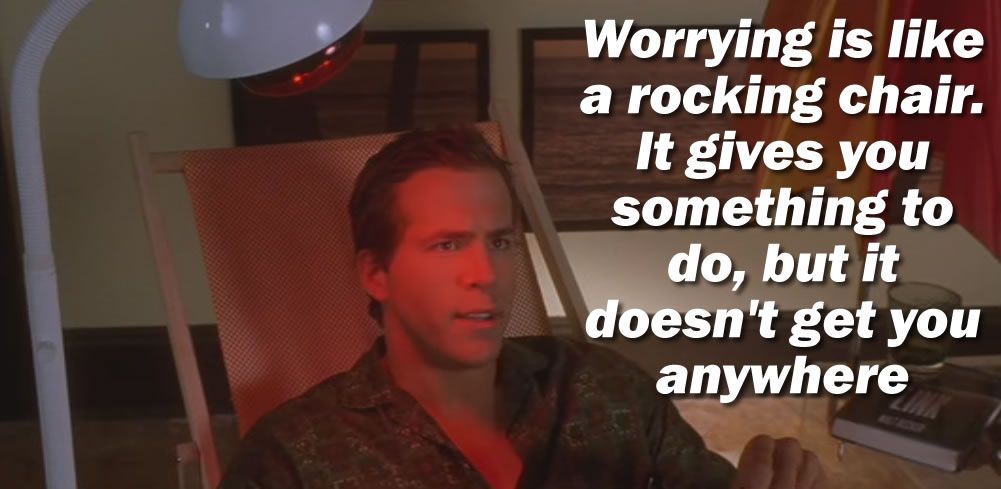Monument Wealth Management Articles
Reducing Worry: How Investors Can Use Logic to Stay Optimistic During Periods of Uncertainty

Share on your favorite platform, or by email
Investing is inherently optimistic. You are investing in the future with the educated belief that it will be better, or more profitable, than right now. If you didn’t believe that, why would you be investing your hard-earned wealth?
In studying for the CFA (Chartered Financial Analyst) Level 1 exam, I was reading the section on geopolitics and geopolitical risks. With the U.S. government undergoing serious debt ceiling negotiations, this topic was extremely relatable. One of the types of geopolitical risks they cover is called Event Risk, which is defined simply as a risk that is known in advance and revolves around set dates or other date-driven milestones.
The logical follow up to that definition is: if you know an event is on the horizon, shouldn’t you do something to navigate a possible Event Risk?
The short answer is no, but what I really mean is not until you’ve done your homework.
The Rocking Chair of Worry
It’s difficult to make investment decisions around events. It’s easy to get emotional when there is something coming on a known timeline, especially in a world consumed by the media that is always hunting for eyeballs. It’s significantly easier to worry, and whip up media-induced panic, about something that could happen on a specific date. It makes for endless punditry building towards an inevitable climax.
Events like Federal Reserve meetings, inflation data releases and the debt ceiling all have the potential to really upset markets. While there’s plenty to worry about, I’ve never found value in worrying. Van Wilder said it best: “Worrying is like a rocking chair. It gives you something to do but it doesn’t get you anywhere.”

All jokes aside, the financial media does LOVE to make people worry. It’s an old sales and marketing tactic. Fear is a powerful emotion and if you can make people feel that you have a better chance they will act emotionally, not logically.
I can already hear some people calling me a Pollyanna or saying that I’m “whistling past the graveyard.” I’m not arguing to ignore possible risks. What I’m advocating for is thoughtful risk analysis. Events based around a known date also normally have a set of known outcomes. So, a better approach is to define the outcomes and determine their probability, impact, and velocity. This is the same process the CFA curriculum advocates for.
Doing Your Homework on Event Risk
At Monument, we advocate for operating on probabilities, not possibilities.
First you should figure out the likelihood of each outcome. Be objective in your predictions, and work to remove your personal biases. Too many times investors will see the world how they think it should be, instead of how it is or is likely to be. Assigning probabilities can feel like a bit of guesswork but gets easier when you look at historical data as your guide. For example, the U.S. government has never failed to raise the debt limit. According to the Treasury Department, Congress has acted 78 separate times since 1960 to address the debt limit. Is it probable that the next time will be different? History says no.
History will also help you in the second step of laying out the potential impacts for each outcome. “History doesn’t repeat itself, but it often rhymes,” so crack open the history books and find comparisons to get an idea of what has happened in the past. Just because it happened a certain way previously, doesn’t mean it will unfold the exact same way now, but having that frame of reference will help because admittedly trying to figure out the impact is the hardest part.
Sometimes it may not go as expected. Take for example the May 2023 debacle with the debt ceiling. I think there were plenty of investors who would’ve thought the impact of an agreement would result in a jump in stocks. Well… the day after an agreement was reached, we saw the S&P 500 up +0.0029%, which was the smallest gain in about four years. I’m not sure how many investors had that on their bingo card.
Finally, you still need to assess the velocity of the potential impacts, or how quickly they will be felt by your portfolio. A high velocity impact is one that is felt instantly, and while they can be severe, they tend to be resolved quickly. Brief selloffs may present opportunities to try and time the market by being tactical with your portfolio, but these are nearly impossible to execute successfully. You may get lucky timing the market once, however very few (if any) investors can do it consistently. With a high velocity event, it’s unlikely that any changes to your long-term asset allocation are necessary. That is as long as you have a sufficient time horizon and ample cash reserves to ride out any market volatility.
On the other end, if an impact is thought to be low velocity, that is something that could be felt slowly over the years to come. In that case, it’s important to give your portfolio extra attention to decide what actions are necessary. This may require significant changes to your asset classes or investment styles. While there may not be instant pain felt by your portfolio, a low velocity event is one that can do irreparable harm to your long-term financial picture if not addressed appropriately for your specific situation.
Use Logic to Overcome Your Worry
This process creates a spectrum of how to view an event which then allows you to weigh the costs versus the benefits of acting. There might be a significant cost to remove a high impact, high velocity, but low probability event from your portfolio. In that case, it’s probably not worth it. But if it only costs a little bit, it might be worth removing the possible impact from even a low probability event to give you more peace of mind. Regardless, by assessing the probabilities, impacts, and velocities of an event’s outcomes, you can reduce the emotion around an event and logically figure out the next steps, if any.
Your wealth manager should never lead with or stoke your fears. It is their job to help you make logical decisions. Instead, they should instill comfort and nurture optimism that is based on thoughtful analysis. More importantly, all the decisions need to be backed by a rock-solid wealth plan built around a systematic, rules-based approach to investing. Nothing good happens in your portfolio or financial plan when emotions are the driving force behind decisions. So, if you feel like you’re stuck in a rocking chair of worry, let us help you work through those concerns to get you where you want and need to go.

Listen to Portfolio Manager, Erin Hay, Discuss How to Move Beyond Worry During Market Downturns
Want to Learn About our Systematic Approach with Private Wealth Design?
IMPORTANT DISCLOSURE INFORMATION
Please remember that past performance is no guarantee of future results. Different types of investments involve varying degrees of risk, and there can be no assurance that the future performance of any specific investment, investment strategy, or product (including the investments and/or investment strategies recommended or undertaken by Monument Capital Management, LLC [“Monument”]), or any non-investment related content, made reference to directly or indirectly in this blog will be profitable, equal any corresponding indicated historical performance level(s), be suitable for your portfolio or individual situation, or prove successful. Due to various factors, including changing market conditions and/or applicable laws, the content may no longer be reflective of current opinions or positions. Moreover, you should not assume that any discussion or information contained in this blog serves as the receipt of, or as a substitute for, personalized investment advice from Monument. To the extent that a reader has any questions regarding the applicability of any specific issue discussed above to his/her individual situation, he/she is encouraged to consult with the professional advisor of his/her choosing. No amount of prior experience or success should be construed that a certain level of results or satisfaction will be achieved if Monument is engaged, or continues to be engaged, to provide investment advisory services. Monument is neither a law firm nor a certified public accounting firm and no portion of the blog content should be construed as legal or accounting advice.
A copy of Monument’s current written disclosure Brochure discussing our advisory services and fees is available for review upon request or at www.monumentwealthmanagement.com/disclosures. Please Note: Monument does not make any representations or warranties as to the accuracy, timeliness, suitability, completeness, or relevance of any information prepared by any unaffiliated third party, whether linked to Monument’s website or blog or incorporated herein, and takes no responsibility for any such content. All such information is provided solely for convenience purposes only and all users thereof should be guided accordingly.
Historical performance results for investment indices, benchmarks, and/or categories have been provided for general informational/comparison purposes only, and generally do not reflect the deduction of transaction and/or custodial charges, the deduction of an investment management fee, nor the impact of taxes, the incurrence of which would have the effect of decreasing historical performance results. It should not be assumed that your Monument account holdings correspond directly to any comparative indices or categories. Please Also Note: (1) performance results do not reflect the impact of taxes; (2) comparative benchmarks/indices may be more or less volatile than your Monument accounts; and, (3) a description of each comparative benchmark/index is available upon request.
Please Remember: If you are a Monument client, please contact Monument, in writing, if there are any changes in your personal/financial situation or investment objectives for the purpose of reviewing/evaluating/revising our previous recommendations and/or services, or if you would like to impose, add, or to modify any reasonable restrictions to our investment advisory services. Unless, and until, you notify us, in writing, to the contrary, we shall continue to provide services as we do currently. Please Also Remember to advise us if you have not been receiving account statements (at least quarterly) from the account custodian.
